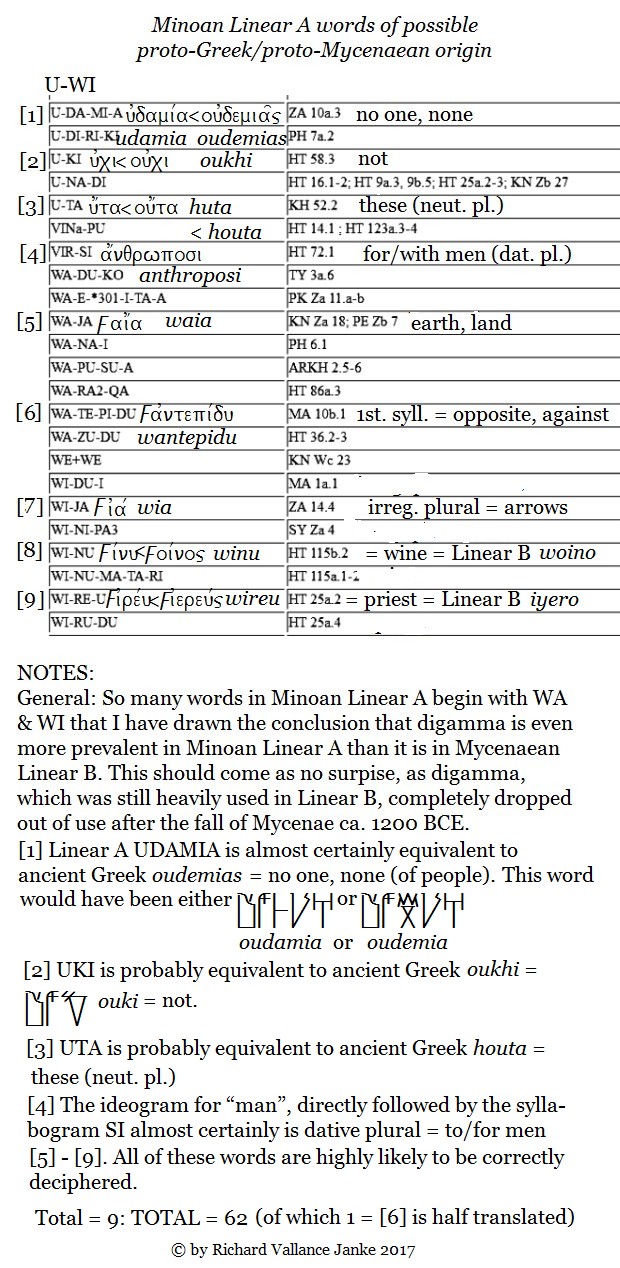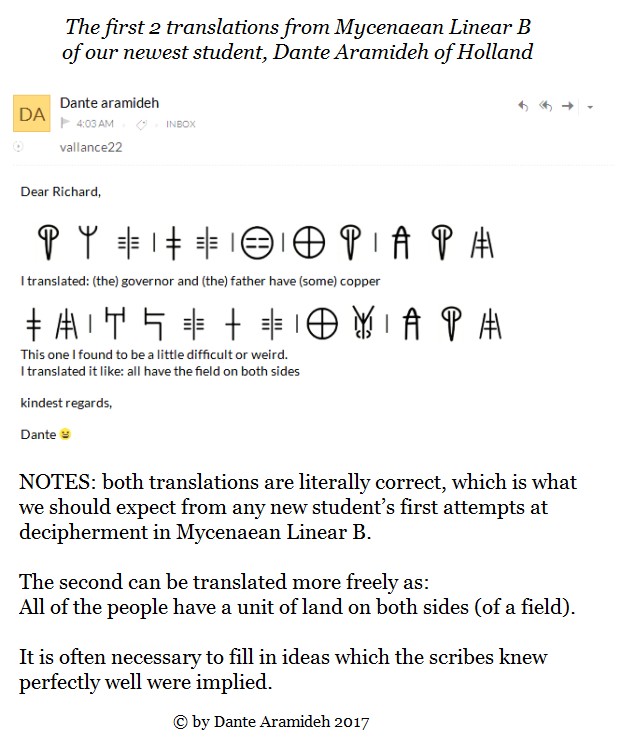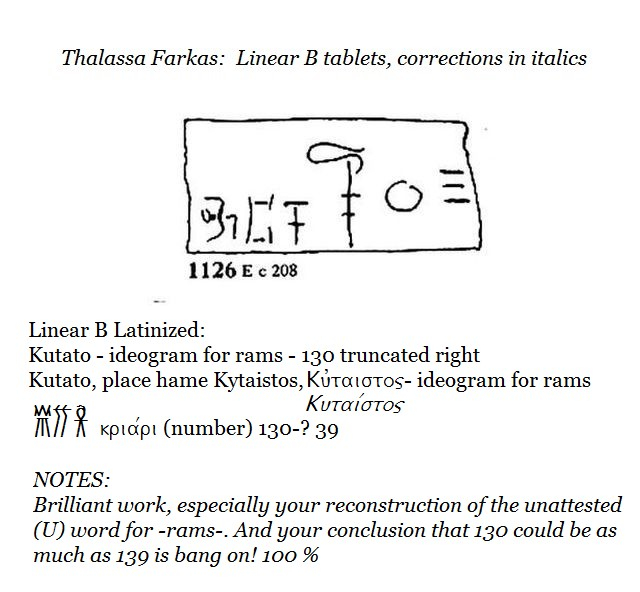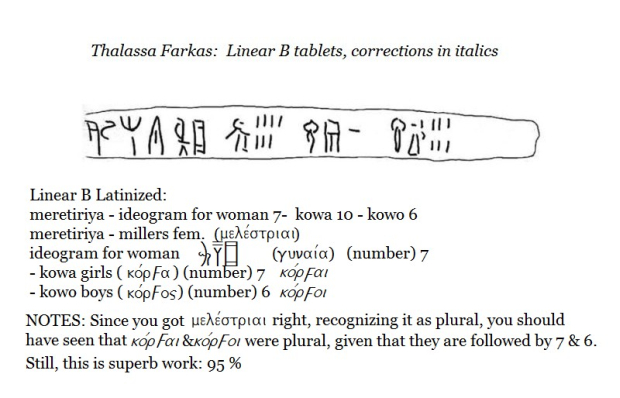9 new Minoan Linear A words under U-WI, all of but 1 of which are probably of proto-Greek origin:

The 9 new Minoan Linear A words under U-WI are all probably of proto-Greek origin. As for those terms beginning with the syllabograms WA & WI, I have come to the conclusion that they all begin with digamma, meaning that digamma is even more common in Minoan Linear A than it is in Mycenaean Linear B. If we take into account that every last one of the Minoan Linear A words beginning with digamma would appear without digamma in Mycenaean Linear A, they all are equivalent to their Mycenaean Linear B and ancient Greek counterparts (the latter having dropped digamma for good). For instance, [3] TERA is almost certainly the ancient volcanic island of Thera, now Santorini, while [5] WAJA is equivalent to archaic Greek aia = earth, land and [7] WIJA is fem. pl. = arrows. The only word I have been unable to satisfactorily decipher is [6], of which I was able to decipher the first 2 syllabograms. You have to read the table to see my translation.
With this, we have come full circle to the end of our remarkable journey towards the decipherment of Minoan Linear A. Now that I have deciphered every last word I believe is of proto-Greek, proto-Hebrew, proto-Semitic or proto-Scythian origin, I have reached a cumulative grand TOTAL of 62 new Minoan Linear A words, expanding my original Minoan Linear A Glossary of 107 words = 21.5% of the total extant Linear B lexicon of 510 terms by my arbitrary count to a TOTAL = 169 words = 33 % of the total Minoan Linear A lexicon, which is exactly the sum and percentage I had predicted! This amounts to what is demonstrably a workable decipherment of the Minoan language, including of its grammar, which had evaded me before.
Now all I have to do is to decipher as many of the 27 supersyllabograms in Minoan Linear A, beyond the 9 I have already deciphered. Now that I am armed with 62 new Minoan Linear A words, I am quite sure that I shall be able to decipher quite a few more of the supersyllabograms, and with that goal accomplished, I shall have effectively and once and for all deciphered the Minoan language.


















You must be logged in to post a comment.